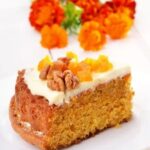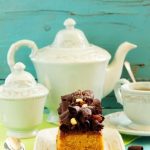What is the best frosting for decorating cakes? Choosing the right frosting is essential in achieving beautiful and delicious cake decorations. Different types of frosting offer various textures, flavors, and versatility, making it crucial to select the most suitable one for your cake decorating needs. In this article, we will explore the different types of frosting commonly used for cake decoration and provide recommendations for the best frosting for different cake styles.
When it comes to decorating cakes, the type of frosting you use can significantly impact the overall look and taste of your creation. From buttercream to fondant, ganache, and cream cheese frosting, each type offers unique qualities that cater to specific cake decorating techniques and styles. Understanding the characteristics of each frosting type is essential in creating stunning cake designs that not only look visually appealing but also taste delicious.
In this comprehensive guide, we will delve into the world of cake decorating frostings and provide insights into their uses, advantages, and potential challenges. Whether you are a beginner baker or an experienced cake decorator looking to expand your skills and knowledge, understanding the best frosting options for different cake styles will elevate your creations to new heights. So let’s dive into exploring the versatile world of cake decorating frostings.
Types of Frosting
When it comes to decorating cakes, choosing the right frosting is essential for achieving the desired look and taste. There are several types of frosting commonly used for cake decorating, each with its own unique properties and characteristics. Understanding the differences between these types of frosting can help you make the best choice for your specific cake decorating needs.
Here are the different types of frosting commonly used for cake decorating:
1. Buttercream Frosting: Buttercream is a classic choice for cake decorating due to its versatility and ease of use. This type of frosting can be flavored in countless ways, making it suitable for various cake flavors. From vanilla and chocolate to fruit or nut-infused variations, buttercream offers a wide range of options for decorators.
2. Fondant: Fondant is a popular choice for creating smooth and flawless finishes on cakes. This type of frosting can be rolled out and draped over a cake to create sleek designs and intricate decorations. However, working with fondant requires patience and skill, as it can be challenging to achieve a perfectly smooth surface.
3. Ganache: Ganache is a decadent frosting made from chocolate and cream that provides a rich and glossy finish to cakes. It can be used for filling layers, covering cakes, or creating elegant drips and glazes. Ganache is particularly well-suited for chocolate lovers but can also be flavored with liqueurs or extracts for variety.
4. Cream Cheese Frosting: Cream cheese frosting has a tangy flavor and creamy texture that pairs well with certain cake flavors such as red velvet or carrot cake. While not as firm as buttercream, cream cheese frosting offers a deliciously different option for decorators looking to add a hint of tartness to their creations.
Understanding the characteristics of each type of frosting is crucial in determining which one will work best for your specific cake decorating project.
Buttercream Frosting
One of the most common types of buttercream is American buttercream, which is made with butter, confectioners’ sugar, and flavorings. It has a light and fluffy texture with a sweet taste, making it ideal for traditional cake decorations.
Another variation is Swiss meringue buttercream, which involves heating egg whites and sugar over a double boiler before whipping in softened butter. This results in a silky smooth frosting with a less sweet taste and a stable texture that holds up well in warmer temperatures.
When it comes to flavor options, the possibilities are endless with buttercream frosting. From classic vanilla and chocolate flavors to more adventurous options like lemon, raspberry, or coffee-flavored buttercream, bakers have the freedom to enhance their cakes with delicious combinations. Additionally, coloring buttercream frosting allows for endless creative possibilities when decorating cakes for special occasions.
In summary, buttercream frosting remains a popular choice for decorating cakes due to its adaptability and variety of options available. Whether it’s the classic American buttercream or the more sophisticated Swiss meringue variation, bakers have numerous choices at their disposal when deciding what is the best frosting for decorating cakes.
With the ability to customize textures and flavors according to personal preferences or specific cake designs, buttercream frosting continues to be an essential component in the world of cake decoration.
Fondant
One of the main advantages of using fondant for cake decorating is its versatility. Fondant can be tinted with different colors, flavored with extracts or oils, and even molded into various shapes and figures. It provides a great blank canvas for intricate designs and artistic decorations, making it ideal for elegant wedding cakes or themed celebration cakes.
Despite its many advantages, working with fondant requires some skill and practice. It can be tricky to roll out the fondant to the right thickness without creating tears or air bubbles. Additionally, fondant has a very sweet taste that may not appeal to everyone. Some people find the texture of fondant to be too chewy when eaten as part of the cake.
When deciding on the best frosting for decorating cakes, it’s important to consider the desired aesthetic as well as the flavor profile of the cake. Fondant is an excellent choice for creating visually stunning cakes with clean lines and intricate details. However, if flavor is a top priority, it may be worth considering other options such as buttercream or cream cheese frosting that provide a more delicious taste experience alongside beautiful decorations.
| Advantages | Disadvantages |
|---|---|
| Versatile for intricate designs | Can be tricky to work with |
| Smooth and flawless finish | Very sweet taste not appealing to everyone |
| Ideal for elegant wedding cakes | Texture may be too chewy when eaten |
Ganache
One of the key benefits of using ganache as a frosting for decorating cakes is its ability to create a flawless finish. When poured over a cake, ganache has the unique ability to set into a smooth, shiny coating that adds an upscale look to any dessert. This makes it particularly well-suited for creating sophisticated and professional-looking cake designs.
In addition to its aesthetic appeal, ganache also offers great flexibility in terms of flavor variations. By using different types of chocolate or adding additional flavorings such as extracts or liqueurs, bakers can customize the taste of their ganache to complement the flavors of the cake.
Whether you’re looking for a classic dark chocolate ganache or something more adventurous like white chocolate raspberry ganache, the options are endless when it comes to infusing different flavors into this versatile frosting. Overall, ganache is an excellent choice for achieving both visual impact and delicious taste in cake decorating projects.
Cream Cheese Frosting
One of the key benefits of cream cheese frosting is its ability to hold up well in warmer temperatures compared to other types of frosting, making it a great option for outdoor events or parties. It also pairs wonderfully with fruit fillings or fresh berries, adding a refreshing element to the overall taste of the cake.
When it comes to decorating cakes with cream cheese frosting, it’s important to consider the consistency of the frosting. To achieve smooth and professional-looking decorations, it’s best to refrigerate the frosting before using it and avoid overmixing it, as this can lead to a runny texture. Additionally, using an offset spatula or piping bag can help create beautiful designs on the cake without compromising the integrity of the frosting.
| Type of Frosting | Suitability |
|---|---|
| Buttercream | Versatile and easy to use for most cake flavors |
| Fondant | Ideal for creating smooth surfaces and intricate designs |
| Ganache | Rich and glossy appearance; suitable for filling and covering cakes |
| Cream Cheese Frosting | Tangy flavor; pairs well with red velvet, carrot, or spice cakes; holds up well in warmer temperatures |
Best Frosting for Different Cake Styles
When it comes to decorating cakes, the type of frosting used can have a significant impact on the overall appearance and taste of the cake. Different cake styles call for different types of frosting in order to achieve the best results. Whether you are working on a wedding cake, birthday cake, or sculpted cake, it’s important to choose the right frosting to complement the design and flavor of the cake.
Wedding Cakes
For wedding cakes, it is crucial to use a frosting that not only looks elegant but also holds up well in different temperatures. Buttercream frosting is a popular choice for wedding cakes due to its smooth texture and ability to hold intricate designs. Swiss meringue buttercream is a great option for a more refined and sophisticated look, while fondant can provide a pristine, flawless finish if that is the desired aesthetic.
Birthday Cakes
When it comes to birthday cakes, there are endless possibilities for frosting options. Buttercream frosting is always a safe bet as it allows for colorful decorations and can be flavored in countless ways to suit any birthday theme or flavor preference. Depending on the design of the cake, fondant can also be used to create intricate details or sculpted figures for themed birthday cakes.
Sculpted Cakes
Sculpted cakes require a more stable and workable type of frosting in order to maintain their shape during the decorating process. Ganache is an excellent choice for sculpted cakes as it provides a smooth surface for shaping and molding without losing its form. Additionally, ganache offers a rich flavor that complements various cake flavors without overpowering them.
Tips for Frosting Success
While choosing the right frosting is important for decorating cakes, mastering the art of frosting application is equally essential. Achieving smooth and professional-looking cake decorations requires practice, patience, and a few helpful tips and tricks. From mastering piping techniques to troubleshooting common frosting problems, here are some valuable pointers for ensuring frosting success on your next cake decorating project.
Piping Techniques
One of the most essential skills for cake decorating is mastering various piping techniques. Whether you’re creating intricate designs or simply adding borders to your cakes, having control over your piping bag is crucial. Practice different pressure levels and movements to achieve consistent and clean lines. Experiment with different piping tips to create a variety of designs, from simple stars and rosettes to more complex borders and floral patterns.
Color Options
When it comes to coloring your frosting, there are several options available. While liquid food coloring is commonly used, gel-based colors are more concentrated and provide vibrant shades without altering the consistency of the frosting. For more subtle pastel shades, consider using powdered food coloring or dusts. It’s important to add color gradually and mix well to achieve the desired hue while avoiding streaks or uneven coloring.
Troubleshooting Common Frosting Problems
Even experienced bakers may encounter common frosting problems such as air bubbles, lumps, or melting in warm temperatures. To prevent air bubbles in your buttercream or ganache frosting, use a paddle attachment when mixing and gently tap the bowl on a flat surface after mixing to release any trapped air.
To avoid lumps in cream cheese frosting, make sure all ingredients are at room temperature before blending them together. When working with fondant in warm conditions, try chilling it briefly before applying it to the cake.
By honing your piping techniques, choosing the right color options, and understanding how to troubleshoot common frosting problems, you can elevate your cake decorating skills and achieve professional-looking results every time.
Conclusion
In conclusion, choosing the best frosting for decorating cakes is essential in achieving the desired result for your cake design. Each type of frosting has its own unique characteristics and suitability for different cake styles, flavors, and decorative techniques. Whether you opt for the versatility and ease of use of buttercream frosting, the smooth finish of fondant, the rich appearance of ganache, or the tangy texture of cream cheese frosting, there are endless possibilities for creating visually stunning cakes.
It’s important to consider the specific requirements of your cake project when selecting a frosting type. For wedding cakes, a fondant may be preferred for its clean and polished look, while buttercream frosting could be the ideal choice for birthday cakes due to its flexibility and flavor variations. When it comes to sculpted cakes, ganache might be favored for its smooth and firm consistency that holds up well during shaping and carving.
Ultimately, experimenting with different frosting options is key to discovering what works best for your individual preferences and decorating style. Don’t be afraid to try new techniques, mix different flavors into your frostings, or play around with color options to create truly customized cake decorations.
With practice and creativity, you can achieve professional-looking results that will impress both yourself and others. So go ahead and explore the world of cake decorating with various frostings – you may just find a new favorite.
Frequently Asked Questions
What Type of Icing Is Best for Cake Decorating?
The best type of icing for cake decorating depends on personal preference and the desired outcome. Some popular options include buttercream, royal icing, fondant, and ganache. Each has its own unique texture and flavor that can complement different types of cakes.
What Kind of Icing Do Professionals Use?
Professionals often use Swiss meringue buttercream for cake decorating. This type of buttercream is made by heating egg whites and sugar over a double boiler and then whipping them into a meringue before adding butter. Swiss meringue buttercream is known for its silky smooth texture and stability, making it ideal for creating intricate designs on cakes.
What Kind of Buttercream Do Professionals Use?
When it comes to professional use, Italian meringue buttercream is another popular choice among bakers and pastry chefs. This type of buttercream is made by pouring a hot sugar syrup over whipped egg whites and then adding butter to create a smooth and creamy frosting.
Italian meringue buttercream is versatile and holds up well in different climate conditions, making it a go-to option for many professionals in the industry.

Welcome to my blog about home and family. This blog is a place where I will share my thoughts, ideas, and experiences related to these important topics. I am a stay-at-home mom with two young children. I hope you enjoy reading it! and may find some helpful tips and ideas that will make your home and family life even better!





